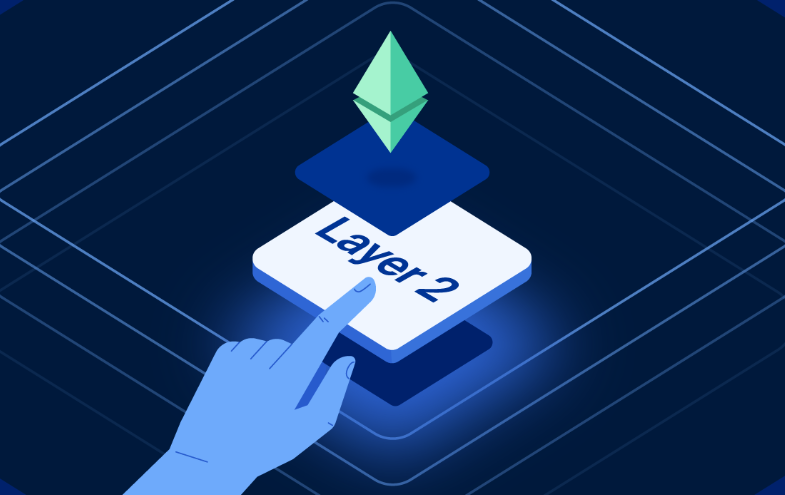Understanding Layer 2 Solutions and Their Importance
Layer 2 solutions are vital innovations in the blockchain ecosystem, designed to improve the scalability and efficiency of decentralized networks. As the demand for blockchain technology grows, the limitations of Layer 1 solutions become increasingly apparent, necessitating the development of Layer 2 protocols.
These solutions operate on top of existing blockchains, taking transactions off the main chain and processing them in a more efficient manner. This enables a significant reduction in congestion, lower transaction fees, and faster confirmation times without compromising the security and decentralization that blockchain technology fundamentally offers.
One of the most noteworthy aspects of exploring the importance of Layer 2 solutions is their role in enhancing user experience. By mitigating the bottlenecks associated with high traffic on popular networks like Ethereum, these solutions allow for smoother interactions and increased usability. Additionally, they enable developers to create more complex applications that require instant transactions, thereby unlocking new possibilities in diverse sectors such as finance, gaming, and supply chain management.
Layer 2 solutions are crucial for the blockchain’s evolution, addressing scalability issues and garnering greater adoption in mainstream applications. Their significance cannot be overstated, as they represent a fundamental step toward a more efficient and user-friendly blockchain environment.
Exploring The Benefits of Layer 2 Solutions for Scalability
As the demand for blockchain technology continues to grow, so does the necessity for scalable solutions. Exploring The advantages of Layer 2 solutions reveals how they address the prevalent scalability challenges faced by major blockchains. Here are some key benefits:
- Increased Throughput: Layer 2 solutions enable a higher number of transactions per second (TPS) compared to base layer blockchain, effectively alleviating congestion.
- Reduced Transaction Fees: By processing transactions off-chain, these solutions minimize the costs associated with on-chain transactions, making microtransactions more feasible.
- Enhanced User Experience: Faster transaction confirmations improve the overall user experience, making blockchain applications more appealing to the average user.
- Seamless Integration: Many Layer 2 solutions are designed to work alongside existing Layer 1 blockchains, ensuring that users can leverage scalability without sacrificing security.
- Flexibility and Versatility: Different Layer 2 solutions cater to varied use cases, whether for payments, decentralized finance (DeFi), or non-fungible tokens (NFTs), allowing developers to choose the best fit for their needs.
exploring The benefits of Layer 2 solutions provides insight into how they improve blockchain scalability, making them a promising area for future innovation and investment.
Key Features to Look For in Promising Layer 2 Solutions
When considering Layer 2 solutions, several key features can help determine their potential effectiveness and suitability for various applications. Understanding these features is crucial for developers, investors, and businesses aiming to adopt these technologies. Below are some of the most critical aspects to evaluate:
- Scalability: The primary purpose of Layer 2 solutions is to enhance scalability. Look for solutions that provide the ability to handle a significantly higher number of transactions per second (TPS) compared to the main blockchain.
- Security: Ensure that the Layer 2 solution maintains a robust security model. This often involves assessing its consensus mechanism, cryptographic standards, and how it manages transactions.
- Interoperability: A promising Layer 2 solution should be able to communicate seamlessly with the underlying Layer 1 blockchain and potentially other Layer 2 solutions. This enhances the utility and ensures a wider range of applications.
- User Experience: Evaluate how easy it is for users to interact with the Layer 2 solution. Features such as wallet compatibility, transaction speeds, and overall usability are critical for user retention.
- Cost Efficiency: Layer 2 solutions should minimize transaction fees to provide a cost-effective alternative for users. Look for solutions that offer low gas fees while maintaining performance.
- Decentralization: The level of decentralization is an important consideration. A highly decentralized Layer 2 solution reduces the risk of single points of failure and increases trust among users.
- Development Community: A strong and active development community behind a Layer 2 solution is a good indicator of its future viability. This can provide ongoing improvements, security upgrades, and a vibrant ecosystem.
- Governance Model: Examine how decisions are made regarding the Layer 2 platform’s future developments. A transparent and fair governance model often correlates with long-term success.
- Ease of Integration: Promising Layer 2 solutions should provide straightforward integration methods so that developers can easily adopt them into existing projects without significant overhead.
- Support for Smart Contracts: Lastly, assess whether the Layer 2 solution allows for complex smart contracts and programmability, which can open doors to a myriad of decentralized applications.
By focusing on these key features, stakeholders can ensure they are backing the most promising Layer 2 solutions in the evolving landscape of blockchain technology. Ultimately, these considerations play a significant role in determining the solution’s ability to contribute to the broader goal of achieving scalability and efficiency in the blockchain ecosystem.
Real-World Applications and Results of Layer 2 Solutions
Layer 2 solutions have been at the forefront of addressing some of the critical issues facing blockchain technology today, particularly concerning scalability and transaction speed. As we delve into exploring the practical applications of these solutions, it becomes evident that they have not only theoretical benefits but have also shown promising results in real-world scenarios.
One of the most notable applications is the integration of Layer 2 solutions in high-throughput environments such as gaming and decentralized finance (DeFi). For instance, networks like Polygon have enabled quick transactions for popular blockchain-based games and DeFi platforms, significantly enhancing user experience by reducing transaction fees and delays.
Moreover, Layer 2 solutions like Arbitrum and Optimism have made a substantial impact on Ethereum’s transaction capacity. These roll-up technologies allow users to bundle multiple transactions into a single batch, which is then processed on the Ethereum mainnet, ensuring security while maintaining speed. As a result, platforms using these solutions have experienced up to a tenfold increase in transaction throughput.
Another significant area where Layer 2 has made strides is in cross-chain interoperability. Solutions such as the Lightning Network allow for instant and low-cost transactions across different blockchains, facilitating a seamless user experience and encouraging more extensive use of decentralized applications (dApps).
These real-world applications not only showcase the effectiveness of Layer 2 solutions but also pave the way for broader adoption of blockchain technology across industries. As projects continue to implement these solutions, their ability to handle high transaction volumes while ensuring low fees will undoubtedly drive further innovation and growth within the blockchain ecosystem.





